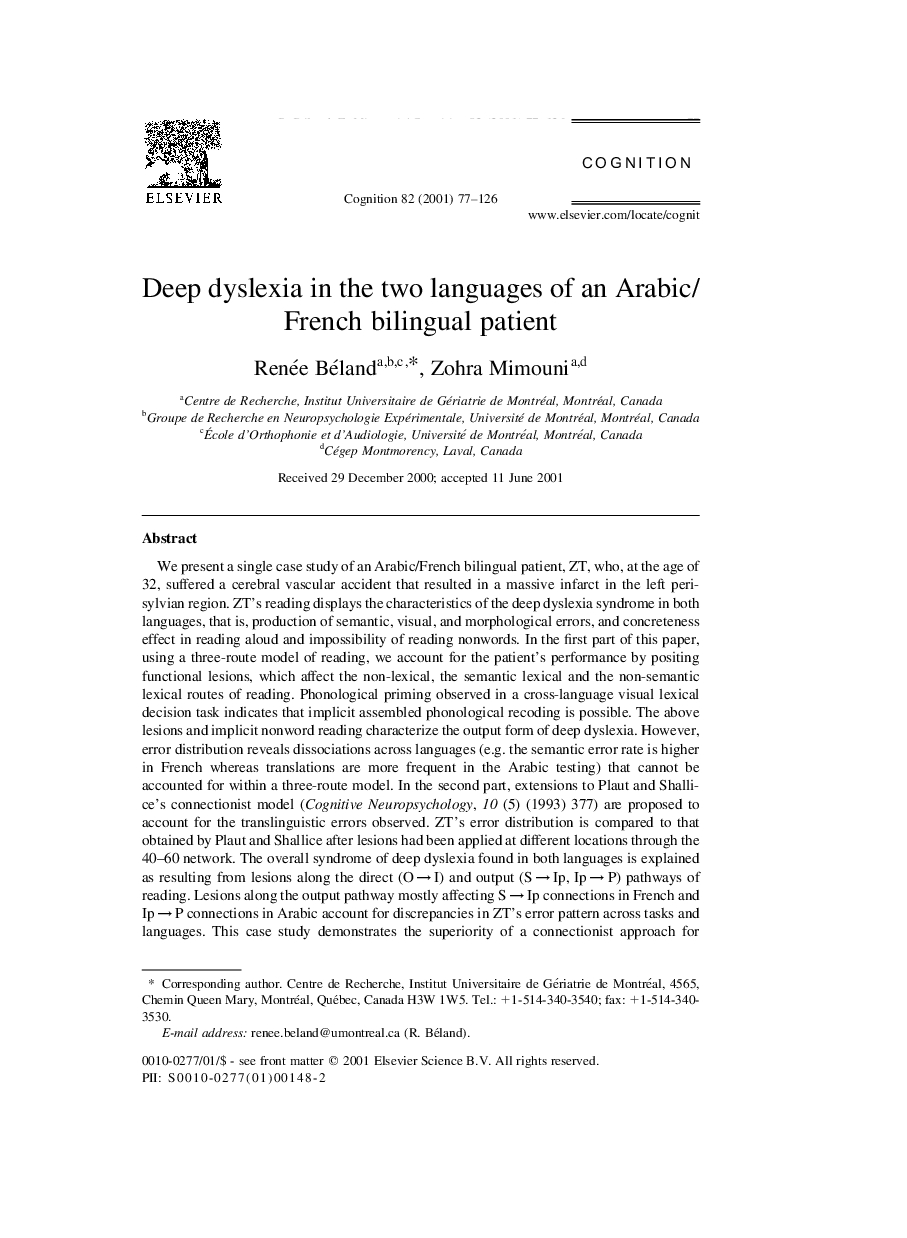ترجمه فارسی عنوان مقاله
خوانش پریشی عمیق در دو زبان از یک بیمار دو زبانه فرانسه/عربی
عنوان انگلیسی
Deep dyslexia in the two languages of an Arabic/French bilingual patient
| کد مقاله | سال انتشار | تعداد صفحات مقاله انگلیسی |
|---|---|---|
| 59280 | 2001 | 50 صفحه PDF |
منبع

Publisher : Elsevier - Science Direct (الزویر - ساینس دایرکت)
Journal : Cognition, Volume 82, Issue 2, December 2001, Pages 77–126
ترجمه کلمات کلیدی
خوانش پریشی عمیق؛ دوزبانگی؛ عربی؛ فرانسه؛ پیوندگرایی
کلمات کلیدی انگلیسی
Deep dyslexia; Bilingualism; Arabic; French; Connectionism

